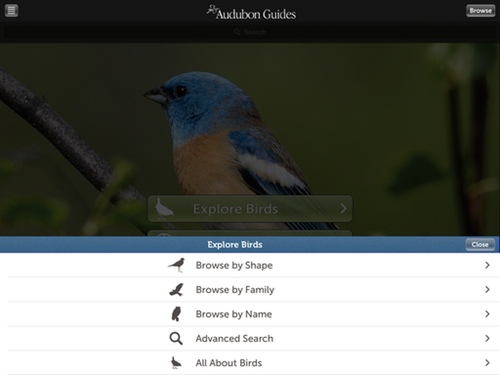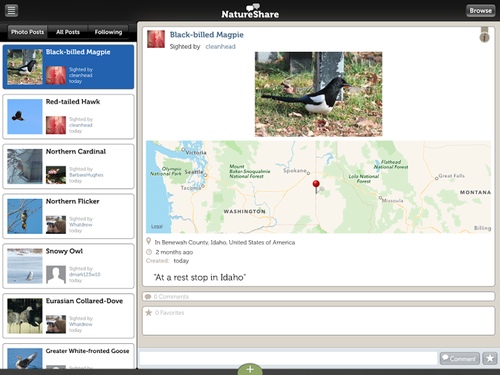
If you enjoy watching the activity at your bird feeder, but need help identifying which birds are sampling your food then you should check out Audubon Birds Pro by Green Mountain Digital. The mobile field guide contains detailed information on up to 821 common and rare bird species in North America.
Audubon Birds Pro is a perfect guide for both new and experienced birders. I count myself among the newbies and have used the app extensively to identify birds that I have seen or photographed while kayaking. I’ve also brought the app along on birding trips and have impressed experienced birders when I was able to playback bird calls on the spot. In one shining moment, I was able to settle a disagreement over the sound made by the Tennessee Warbler.

Audubon Birds Pro is focused on helping you identify birds, so the app launches to a dashboard filled with search and exploration tools. If you want to browse the guide, you can select the “Explore Birds” option, which allows you to thumb casually through the listings as you would do with the printed Audubon guide. You also can browse the database by characteristics such as shape, family and more.

Audubon Birds Pro also allows you to find birds using eBirds, a bird geolocating service powered by Cornell Laboratory of Ornithology. eBird allows users to submit their bird sightings to a database that is shared with the community. This information allows you to search for nearby birds as well as view a map of birds that have been spotted recently in your region.

Audobon not only helps you find birds, it teaches you about them as well. Each bird entry contains a concise, but fact-filled description that includes details about the range, voice and the notable physical characteristics of the species. For the visual-oriented birder, each entry has several high-resolution images, showing the variation within the species. There also is a list of similar birds, which is useful if you are having a hard time distinguishing between several birds that look alike.
Audubon’s eBird geolocation feature and concise bird descriptions are useful, but the standout feature of the app is its bird call database. Since birding is 75% listening and 25% sighting, it is extremely helpful to have a repository of common calls in your back pocket.

The app includes several common vocalizations for each bird, allowing you to identify a bird in a wide range of environments. Not only can you listen to the calls to see if it matches what you hear in the wild, you also can turn up the volume on your iPhone or iPad and use the app to play the bird call. If the nearby bird is vocal, you may be able to elicit a call in response. I tried this once while kayaking at a nearby pond and had an interesting conversation with the local loon pair that resides there each summer.

More than a stand-alone application, Audubon Birds Pro also ships with the NatureShare social network for sharing your bird lists and sightings. You are prompted to join NatureShare at first launch, and though the sharing of your bird sighting information is optional, you will need a NatureShare login to use all the features of the app.
Audubon Birds Pro is available for $9.99 and is compatible with the iPhone and iPad. It is a digital version of the popular paperback Audubon field guide to birds and is suitable for both the new and veteran birder.
